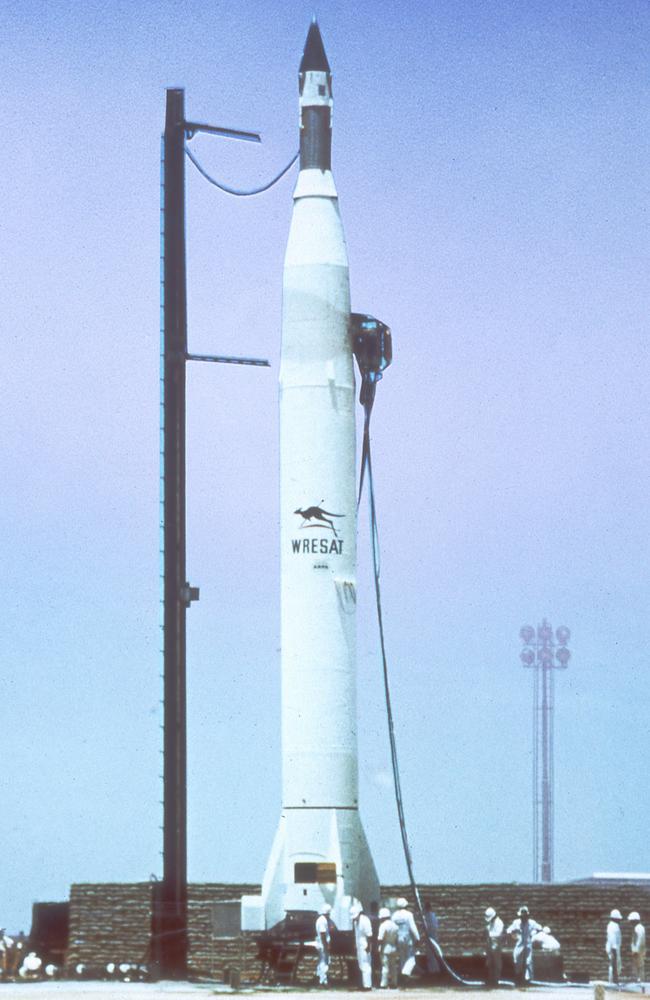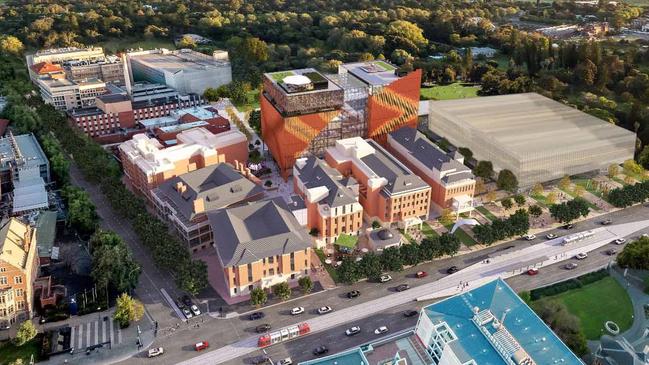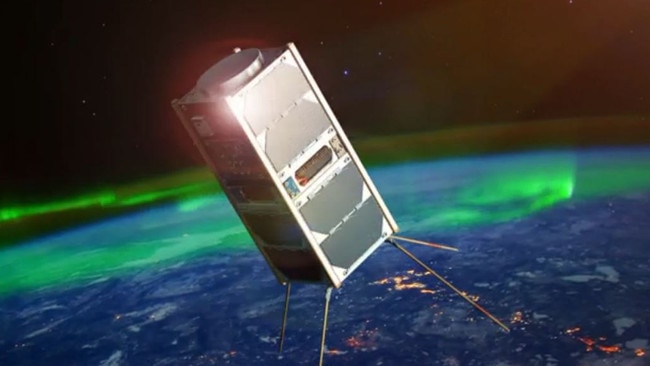Fifty years ago South Australia was Space Central, and now it will be again
Fifty years ago Australia’s first satellite was launched at Woomera, in South Australia’s outback. After a long hibernation, a new era in space has begun.
SA News
Don't miss out on the headlines from SA News. Followed categories will be added to My News.
- HUGE WIN: Space Agency and City Deal in massive SA coup
- EXPLAINER: So what is a City Deal anyway?
- REACTION: What readers think of Space Agency in Adelaide
- ANALYSIS: How Adelaide’s bid came out on top
Australia, welcome to Space 2.0.
The moon landing is now many moons ago. Even more moons ago, the Russians launched Sputnik – the world’s first satellite – into orbit.
Europe got together to start a space launch program and work on a multi-stage rocket, Europa, which ultimately foundered.
The US created the National Aeronautics and Space Administration – NASA – and sent its own satellite up, the Explorer 1.
South Australia, in November 1967, was front and centre in the space race. That’s when Australia became the third country in the world to launch its own satellite, WRESAT.

Woomera was the perfect spot for space launches because of its enormous, well, space. It is also electromagnetically quiet, meaning little interference from electrical devices and even natural phenomena such as lightning. Other nations clamoured to use Woomera, but it became a secret defence establishment. It still is. Now all sorts of top secret, stealthy military tests are done out at the Woomera Prohibited Area, and it is closed to Space 2.0, the new industry-driven paradigm.
But that no longer matters. Australia, and SA in particular, has forged ahead. Fertile ground has been prepared for space start-ups to grow. Tech entrepreneurs have been lured in by grants, by bipartisan enthusiasm, and by the teeming ecosystem that is being created.
SA has already been given an enormous opportunity with the $90 billion ship and submarine building programs, and many of those defence giants are also working in the space space.
Then there’s Lot Fourteen, the old Royal Adelaide Hospital site. It’s a unique bit of land perfect for a range of hi-tech companies to move into, to network and share ideas; in the city, near the beautiful Botanic Garden and the Torrens and an appealing place for people to come to work.

Now it will be home to the Australian Space Agency, which will help industry jump into Space 2.0, which is all about satellites. Satellites enable the Internet of Things, a vast network connecting everything to the internet. It is already helping farmers track their crops and tailor their irrigation. It’s tracking freight and monitoring infrastructure. There are myriad ways the new smaller, cheaper satellites can be used.
The agency will co-ordinate the space sector, support its growth, and give policy and strategic advice to the Federal Government. It will become the beating heart of an ecosystem that is already here.
Overlooking that ecosystem is the Space Industry Association of Australia, and the State Government’s SA Space Industry Centre. There’s another layer of connectivity through Defence SA and the industry’s Defence Teaming Centre. And already there are major defence companies who have been wading into space – Lockheed Martin, Airbus, BAE, Boeing, Nova Systems. CSIRO is working hard in the Defence space, and wants to run robot-staffed shuttles to the moon by the 2030s.
The University of Adelaide’s Law School is working on the rules for space. They’re setting up the Australian Navigational Guide Explaining Laws for Space (ANGELS) to help start-ups here and everywhere in Australia understand national, foreign, and international laws that might affect them.
It’s also the Adelaide Law School that is front and centre of the Woomera Manual project, which is touted as “the definitive document on military and security law as it applies to space”.
No wonder the start-ups have started up.
One of the most high-profile is Fleet Space Technologies, which has made a start on putting a constellation of 100 small satellites into orbit for the Internet of Things. Fleet has launched four commercial satellites in the past month.
Myriota, a Lot Fourteen satellite start-up, is in a “phase of rapid expansion”. They have developed a super-cheap internet of Things service.

Inovor Technologies had a breakthrough just last week, announcing a partnership with the CSIRO for Earth observation — Inovor has created a satellite that can detect infra-red light and will be able to spot bushfires or monitor cyclones. Then there’s Southern Launch, which will set up a rocket launch site on Eyre Peninsula. That will be used to send satellites into space, but chief executive officer Lloyd Damp says it will also be a place for people to come and learn about space and see a launch for themselves.
While most start-ups are focused on satellites and their precious data, Neumann Space is working on making space travel affordable and accessible. Trying to set up a pipeline of workers to feed all this growing industry are SA’s schools – especially Hamilton Secondary College, which has its own space school – and universities. Sprinkled through them are new programs, grants, incentives and scholarships to funnel SA’s science brains into space.
This week, NASA’s Voyager 2 probe hit interstellar space, six years after Voyager 1 made it. Voyager 2, which set off in 1977, is now more than 18 billion kilometres from Earth, but it’s sending back information that’s being picked up in Canberra.
People have been intrigued by expeditions to Mars, where the Rover has fallen asleep, while the InSight lander has captured the sound of the Red Planet’s wind. China has launched a rover to land on the moon.
SA had already thrust its way back into the world’s space story, being home to the agency will only fuel the journey.
More of today’s space agency coverage
EDITORIAL: SA had hopes raised and disappointed before — but this feels different



